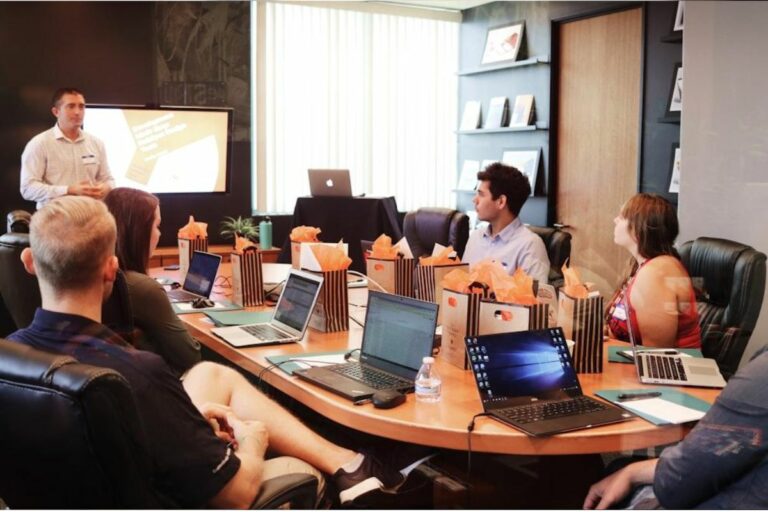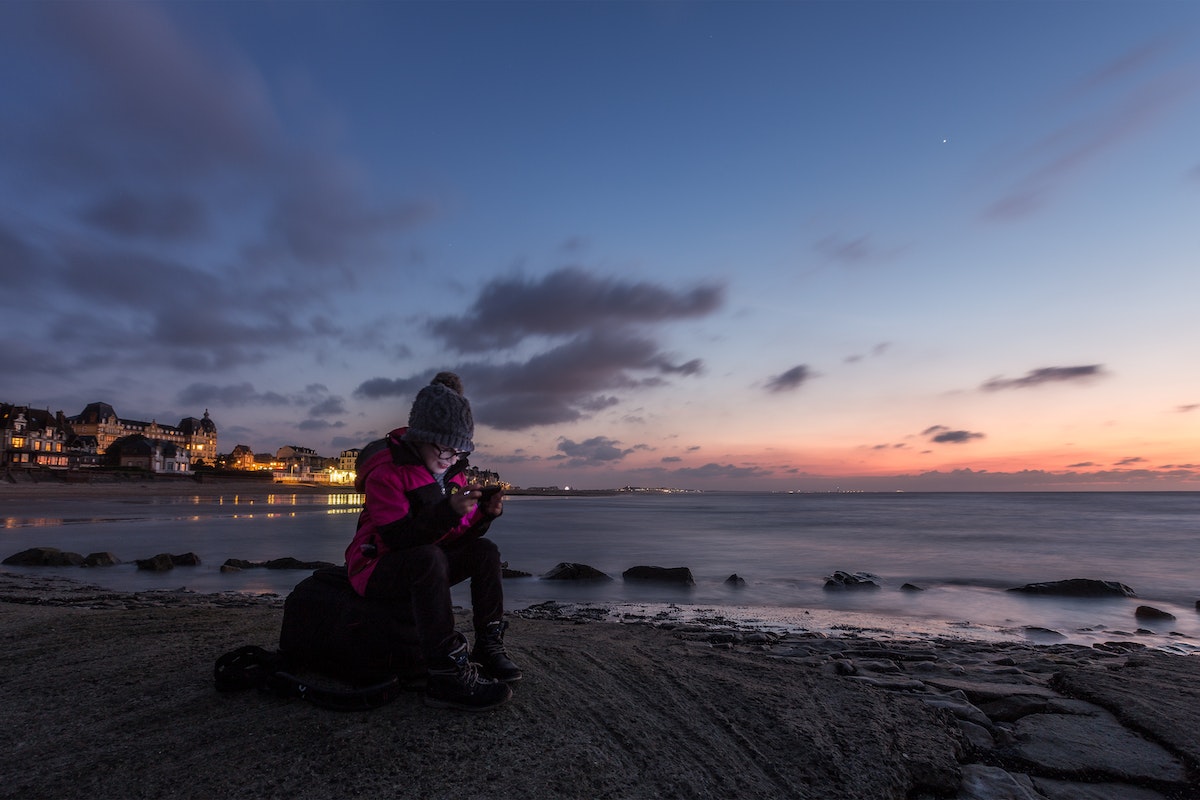How can you tell if a non friend is looking at your Facebook page?
As social media continues to play a significant role in our daily lives, it’s natural to wonder who is viewing our profiles.
While Facebook doesn’t provide a straightforward way to see who has viewed your profile, there are a few methods you can use to get an idea of who might be checking you out.
One way to tell if a non-friend is looking at your Facebook page is to check your “People You May Know” section.
If you see someone you don’t know and don’t have any mutual friends with, it’s possible that they found your page by searching for you or seeing your interactions with mutual friends.
Additionally, monitoring your profile’s activity log can also help you identify users who have visited your profile.
By keeping an eye on your activity log, you can see who has viewed your profile and what actions they took while they were there.
Post Contents
- 1 Understanding Facebook Privacy
- 2 How to Tell if a Non Friend is Looking at Your Facebook Page?
- 3 How Facebook Suggests Friends
- 4 Exploring Third-Party Apps
- 5 Using Facebook’s Built-In Tools
- 6 Analyzing Likes and Interactions
- 7 Checking Browser Extensions and Page Source
- 8 Comparing Other Social Media Platforms
- 9 Securing Your Facebook Account
- 10 Key Takeaways
Understanding Facebook Privacy
When it comes to Facebook privacy, it’s important to understand how your profile is visible to others.
By default, Facebook allows your profile to be visible to anyone on the internet.
This means that even if you’re not friends with someone on Facebook, they can still see your profile and any information you’ve shared publicly.
To ensure your privacy on Facebook, you should review your privacy settings and adjust them as necessary.
Here are some tips to help you manage your Facebook privacy:
- Review your profile settings: Go to your profile page and click the three dots on the top right corner. Select “Edit Profile” and review the information that’s visible to others. You can choose to hide certain information or limit who can see it.
- Adjust your privacy settings: Click on the downward arrow on the top right corner of Facebook and select “Settings & Privacy.” From there, you can review and adjust your privacy settings, including who can see your posts, who can send you friend requests, and more.
- Enable two-factor authentication: Two-factor authentication adds an extra layer of security to your Facebook account. When enabled, Facebook will require a code in addition to your password to log in. This helps prevent unauthorized access to your account.
Remember, even with the strictest privacy settings, there’s still a chance that someone could see your profile if they have a mutual friend or if your profile appears in a search result.
It’s important to be mindful of what you share on Facebook and who can see it.
How to Tell if a Non Friend is Looking at Your Facebook Page?

Do you ever wonder if someone who is not your friend on Facebook is looking at your profile?
While Facebook doesn’t provide a feature to see who viewed your profile, there are a few ways to identify if someone who is not your friend is checking out your page.
One way is to check your “Active Now” list, which shows who is currently online.
If you see someone you don’t recognize, they might be checking out your page.
However, keep in mind that this is not a foolproof method as the person could simply be browsing Facebook without looking at your profile.
Another way is to pay attention to your notifications.
If you notice that someone who is not your friend is frequently liking or commenting on your posts, it could be a sign that they are interested in your content and checking out your profile.
You can also use third-party apps that claim to show you who viewed your profile.
However, be cautious when using these apps as they may not be accurate and could potentially compromise your account’s security.
How Facebook Suggests Friends
Facebook’s friend suggestion algorithm is designed to help you connect with people you may know or want to know.
The algorithm uses various factors to suggest friends, including mutual friends, your networks, and your Facebook activity.
Friends List
Your friends list is one of the primary factors that Facebook uses to suggest new friends.
If you have a lot of mutual friends with someone, Facebook may suggest that you add them as a friend.
The more friends you have in common, the more likely Facebook is to suggest that you connect.
Friend Suggestions
Facebook’s friend suggestion algorithm also takes into account your networks, such as your current city, school, or workplace.
If someone has similar network information to you, Facebook may suggest that you add them as a friend.
Additionally, if you belong to the same Facebook group or have been tagged in the same photo or post, Facebook may suggest that you connect.
Personal Information
Your personal information, such as your age, gender, and interests, can also influence Facebook’s friend suggestion algorithm.
If someone has similar information to you, Facebook may suggest that you add them as a friend.
However, Facebook does not share your personal information with other users, so your privacy is protected.
Exploring Third-Party Apps
When it comes to identifying non-friends visiting your Facebook profile, you may come across third-party apps that claim to notify you whenever someone views your profile or sends a friend request.
However, it’s important to be cautious about using such apps as they may not always be accurate or safe.
If you’re using an Android or iOS device, you can check if any third-party apps have access to your Facebook account by going to the account settings page.
Look for the section that says “Apps and Websites” and click on “Logged in with Facebook.”
Here, you can see a list of apps that have access to your Facebook account and revoke access if necessary.
It’s important to note that some third-party apps may ask for access to your Facebook account for legitimate reasons, such as integrating with other services or offering additional features.
However, always read the app’s privacy policy and terms of service before granting access.
Additionally, be wary of third-party apps that claim to offer features that are not available on Facebook’s official app or website.
These apps may be malicious and could compromise your account’s security.
Using Facebook’s Built-In Tools

If you’re curious about who is viewing your Facebook page, you can use some of Facebook’s built-in tools to get some insights.
Here are some tools you can use:
View As
You can see what your profile looks like to people who are not your friends on Facebook by using the View As tool.
To use it, click on your profile picture in the top right corner of Facebook, then click on the three dots next to “View Activity Log” and select “View As”.
This will show you what your profile looks like to the public, including people who are not your friends.
Facebook Stories
If you have a Facebook Story posted, you can see who has viewed it.
To do this, open your Story and swipe up.
This will show you a list of people who have viewed your Story.
Keep in mind that this only applies to Stories, not regular posts.
Facebook Insights
If you have a Facebook Page, you can use Facebook Insights to see how many people have viewed your Page and your posts.
This tool also provides information on your audience demographics and engagement metrics.
Activity Log
Your Activity Log shows you a chronological list of all your activity on Facebook, including posts, comments, and likes.
You can use this tool to see who has interacted with your content and when.
Keep in mind that while these tools can provide some insights into who is viewing your Facebook page, they are not foolproof.
Facebook’s privacy settings can make it difficult to determine who is viewing your content.
Additionally, some third-party apps claim to offer insights into who is viewing your profile, but these are often scams or not reliable.
Analyzing Likes and Interactions
When someone interacts with your Facebook posts, it can be a sign that they have been visiting your page.
While this is not a foolproof method of determining who has been looking at your profile, it can give you some clues.
One thing to look at is the frequency and timing of likes.
If you notice that someone is consistently liking your posts, especially soon after you post them, it could be a sign that they are keeping a close eye on your activity.
This is especially true if the person is not someone you interact with regularly on Facebook.
Another thing to consider is the type of content that the person is liking.
If they are only liking posts that are very personal or that reveal a lot about your life, it could be a sign that they are more than just a casual Facebook user.
This could be especially true if they are liking posts that are not getting a lot of attention from other people.
It’s also worth considering the context of the likes.
If the person is liking posts that are related to a specific topic or interest that you have, it could be a sign that they are interested in that topic as well.
This could be a good way to strike up a conversation with the person and see if they are interested in connecting outside of Facebook.
Checking Browser Extensions and Page Source
If you’re concerned that someone who is not your friend on Facebook is looking at your profile, you may want to check your browser extensions and page source.
Here’s how you can do that:
Browser Extensions
Browser extensions are small software programs that can modify and enhance the functionality of your web browser.
Some extensions, such as Facebook Profile Viewers, claim to allow you to see who has viewed your Facebook profile.
However, be wary of these claims, as they are often false and can be a way for scammers to access your personal information.
To check your browser extensions in Google Chrome, follow these steps:
- Click the three dots in the upper-right corner of the browser window.
- Select “More tools” and then “Extensions.”
- Look for any suspicious extensions that you don’t remember installing.
- If you find any, click the “Remove” button to uninstall them.
Page Source
The page source of a web page is the HTML code that makes up the page.
While it can be intimidating to look at, it can also provide useful information about who has viewed your Facebook profile.
To view the page source in Google Chrome, follow these steps:
- Right-click on the Facebook page and select “View page source.”
- Press “Ctrl+F” to open the search bar.
- Type “InitialChatFriendsList” into the search bar.
- If you see a list of numbers after “InitialChatFriendsList,” these are the profile IDs of people who have recently viewed your Facebook profile.
Keep in mind that this method is not foolproof and may not provide accurate information about who has viewed your profile.
Additionally, be cautious of any websites or browser extensions that claim to provide this information, as they may be scams.
Comparing Other Social Media Platforms
If you’re curious about how different social media platforms compare to Facebook in terms of user activity, here are some quick statistics:
- LinkedIn: This platform is focused on professional networking and job searching. It has over 700 million users worldwide, and 57% of users are male. The average user spends about 17 minutes per month on the site.
- Snapchat: This app is popular among younger users for its disappearing messages and fun filters. It has over 500 million monthly active users, and the majority of users are under 30 years old. The average user spends about 30 minutes per day on the app.
While these platforms may not have the same level of user activity as Facebook, they still offer unique benefits to their users.
For example, LinkedIn is a great place to connect with professionals in your industry and find job opportunities.
Snapchat is a fun way to share moments with friends and stay up-to-date with the latest trends.
It’s also worth noting that each platform has its own privacy settings and policies.
Be sure to review these settings regularly to ensure that you’re sharing your information only with the people you want to.
Securing Your Facebook Account
Keeping your Facebook account secure is essential to protect your privacy and personal information
Here are some tips to help you secure your Facebook account:
- Use a strong password: Your password should be unique and complex with a combination of letters, numbers, and symbols. Avoid using personal information like your name, birthdate, or phone number.
- Enable two-factor authentication: Two-factor authentication adds an extra layer of security to your account by requiring a code sent to your phone or email in addition to your password.
- Review your privacy settings: Make sure you understand who can see your posts, photos, and personal information. You can customize your privacy settings to control who can see your content.
- Be cautious of friend requests: Only accept friend requests from people you know in real life. Scammers can create fake profiles to gain access to your personal information.
- Avoid clicking on suspicious links: Be careful when clicking on links in messages or posts. Hackers can use these links to steal your login information or install malware on your device.
By following these tips, you can help keep your Facebook account secure and protect your privacy.
Remember to always be cautious when sharing personal information online and stay up-to-date on the latest security features and threats.
Key Takeaways
Here are some key takeaways to help you understand how to tell if a non-friend is looking at your Facebook page:
- Facebook does not provide a feature that allows you to see who viewed your profile or posts.
- Several third-party applications claim to notify you whenever someone views your profile or sends a friend request, but they are not always accurate.
- You can monitor your profile’s activity log to see the users who have visited your profile. However, this feature only shows the users who have interacted with your profile in some way, such as liking or commenting on your posts.
- You can also lock your Facebook profile from non-friends to prevent them from seeing your posts, photos, and personal information. This feature is useful if you want to keep your Facebook activity private.
- Keep in mind that some people may use fake accounts or view your profile without leaving any trace. Therefore, it’s essential to be cautious about what you share on Facebook and who you accept as friends.
In summary, while there is no foolproof way to tell if a non-friend is looking at your Facebook page, you can use the activity log and privacy settings to monitor and control who can see your profile.
By being mindful of your online activity, you can ensure that your personal information remains secure and private.






























